
Will We Lose the S.F. Art Institute?
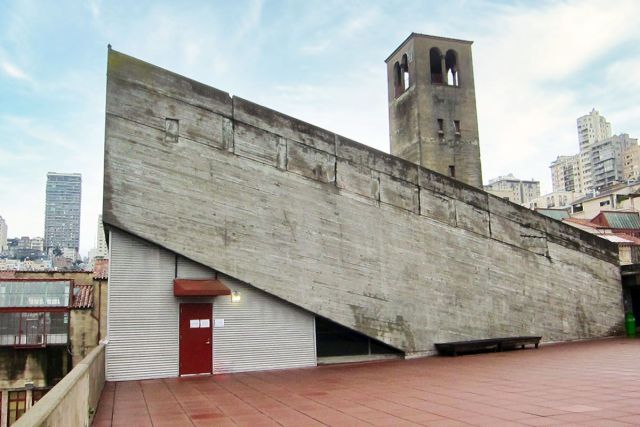 |
The first time the author of this blog came to San Francisco he visited the Tenderloin, Haight Ashbury, the Broadway Strip, Coit Tower, and the San Francisco Art Institute – in that order. It was 1970, and even for a guy from the East Coast, the art institute called out.
The legendary school, one of the most important yet often overlooked art establishments in Northern California, is threatened with closure due to finances.
The loss would be artistic: it is known as a superb school that focuses on fine, not commercial, art; historic: for having given birth or helped give birth to many great artists and art movements, including such mid-20th-century trends as Bay Area abstraction, Bay Figurative, and Funk; and architectural.
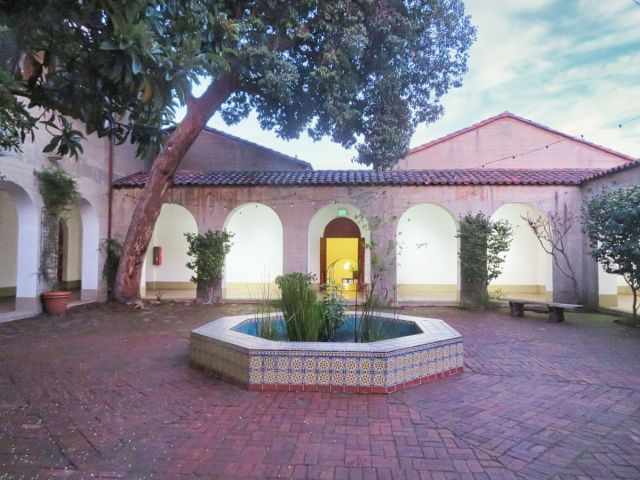 |
Two buildings in one, actually, both extraordinary, the original art institute suggests a 1926 Spanish-tinged monastery, complete with an out of doors cloister and an imposing tower. Part of it was designed by architects Bakewell and Brown, who were expert Bay Area practitioners. San Francisco City Hall is another of their works.
Their section of the art institute is one of the more soothing spaces in the city; visit, when you can, the courtyard fountain.
Less soothing, more dramatic, and rather entertaining, thanks in part to the views it provides, is the Brutalist addition designed by a British architect based in the city with a remarkable sense of structure and a remarkable name, Paffard Keatinge-Clay. The addition, which contains studio space, classrooms, a gallery, and more, was new in 1970.
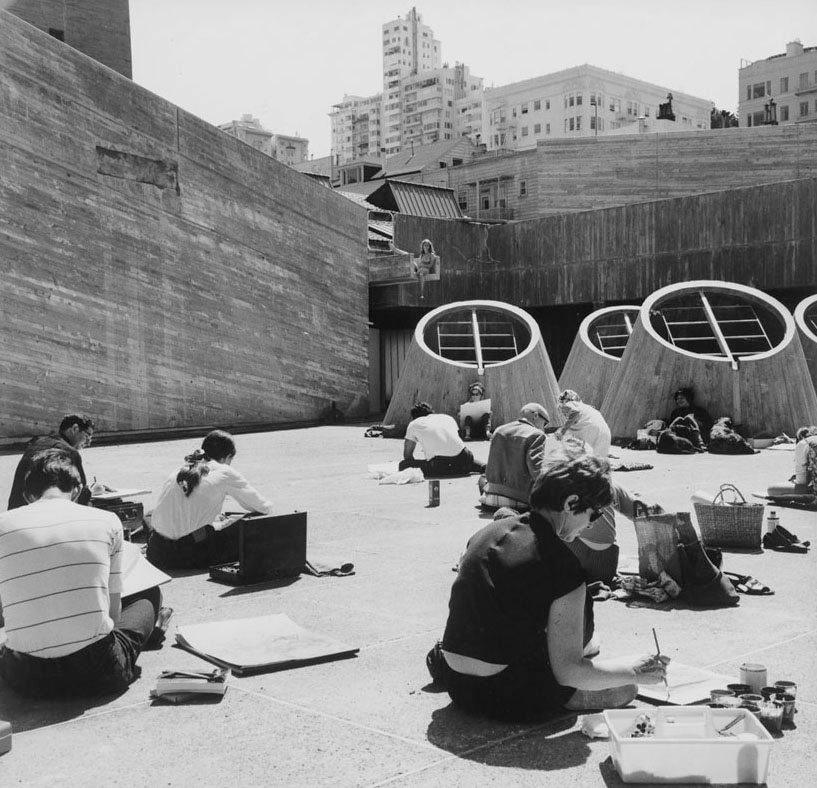 |
'Brutalist,' a term popularized in the mid-1960s, refers to architecture employing concrete in sculptural, expressive ways, inspired in part by Le Corbusier. It does not refer to torture, though some critics have disagreed.
Keatinge-Clay’s addition provides a sweeping open deck, functional elements turned into sculpture, and a signature element of his that can also be found winningly at his Student Union at S.F. State – a steep-stepped rooftop that serves as roof, steps, and seating. Quite vertiginous.
(Not everyone is a fan of the addition. Architectural historian Bill Kostura has called it “dreary.”)
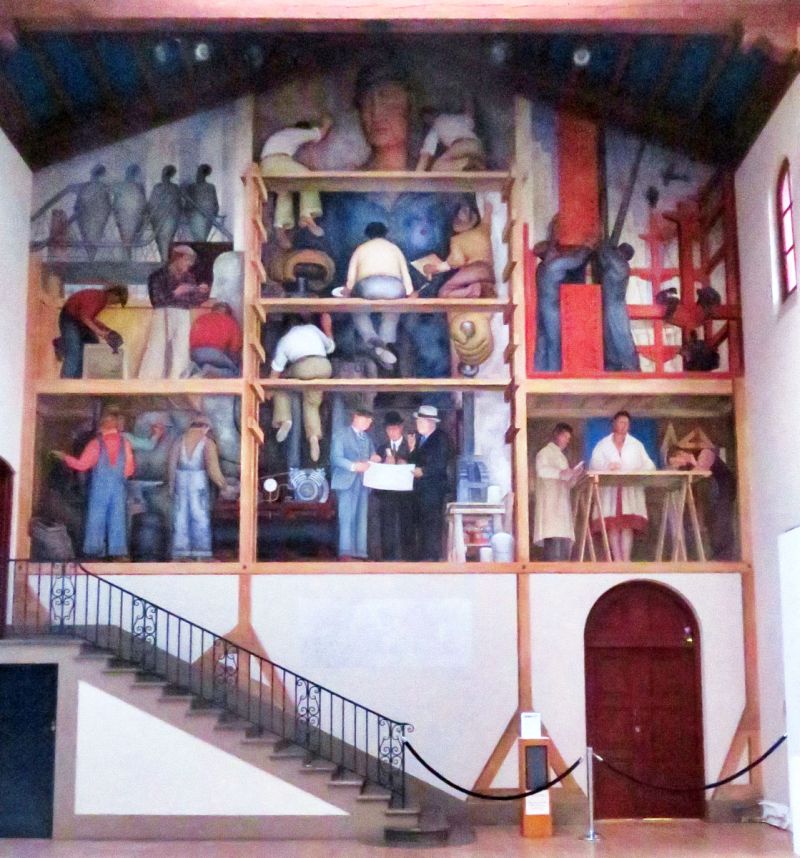 |
Over the years, the art institute has also played a role for the larger community, hosting art exhibits, speakers, and other events. For many years it attracted fans of avant-garde cinema, thanks to San Francisco Cinematheque screenings.
The SFAI opened a second campus with a public art gallery recently on an airy, refurbished Fort Mason pier.
The news that the oldest art school in San Francisco would not seek new students for the upcoming year came out in late March, just as Covid-19 was hitting. Layoffs were announced. The school said that efforts to merge with another institution had come to naught. It said the virus was a contributing factor.
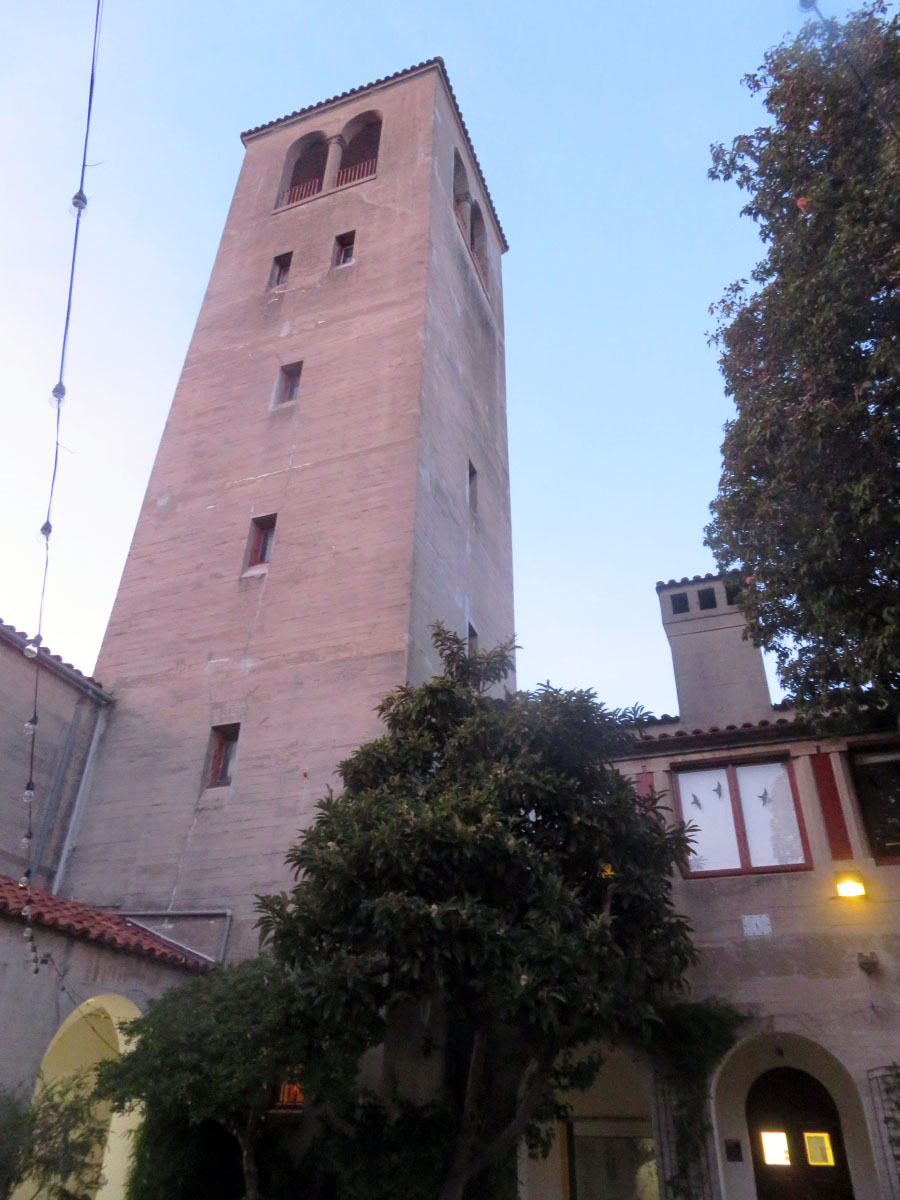 |
Board chair Pam Levy did offer some hope in her interview with the San Francisco Chronicle. “We might be smaller. We might be consolidated to one campus,” she said. “We might be in partnership with another institution, but we will continue.”
A group of art professionals has organized to ensure that the school remains in business. On the institute’s website they are seeking donations, and write:
“That it might cease to exist has caused shock and dismay across the art world, especially here in the Bay Area. Rather than simply commiserate with one another, arts professionals from institutions large and small have come together to publicly state that there are many people who care deeply about this and what it means for our community.”
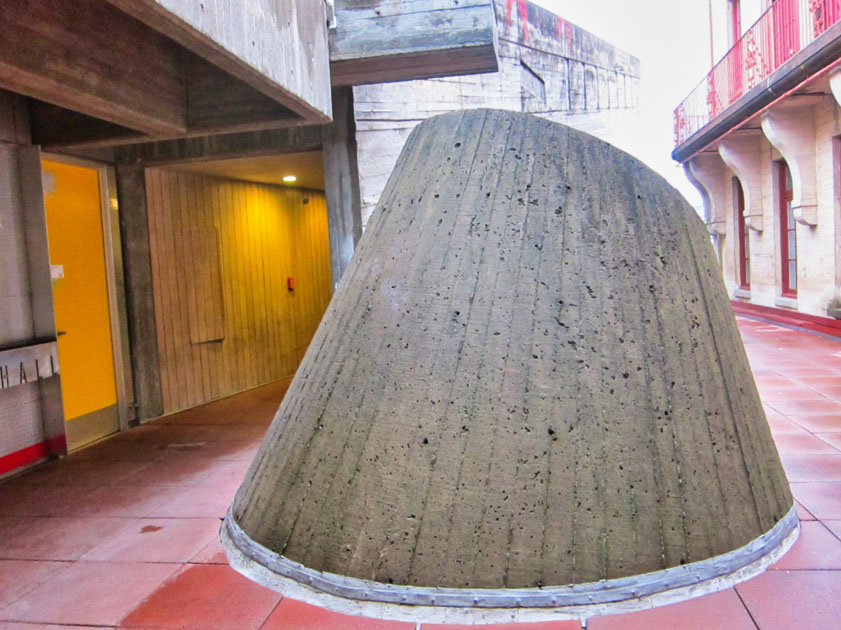 |
The institute, called the California School of Fine Arts from 1917, had even earlier roots, when it started as the San Francisco Art Association in 1871.
It emerged as central to the growth of Bay Area modernism right after World War II. Among the now legendary artistic personages who taught or studied, or both, at the school were Clyfford Still, who became internationally known for his abstractions and influenced many; Elmer Bischoff, Hassel Smith, and David Park, founder of the Bay Figurative movement. Jean Varda, the painter and mosaic designer, taught there – as did Mark Rothko, for two summers in the late ‘40s.
The school attracted trend-setting modern Conceptualist-tinged ceramicists including Ron Nagle and Jim Melchert.
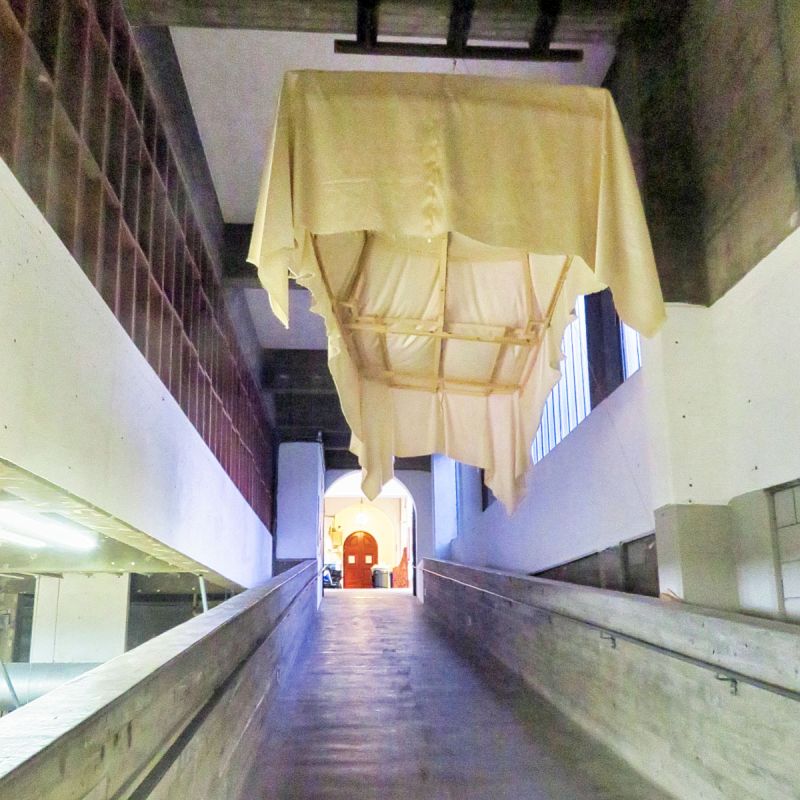 |
Students and faculty socialized at Bruno’s down the hill, and at other eateries and bars in Beatnik-era North Beach. They made music together in jazz bands, David Park on the keys.
As the Bay Area recovers from Covid we are likely to see many changes to our neighborhood shopping streets, our habits of going about and of finding entertainment, our ways of educating ourselves and enjoying the arts.
We are rooting for the institute but are worrying about what might take its place in its remarkable headquarters. You can’t help but conjure up the for-profit Academy of Art University, which has produced many excellent fine and commercial artists, and employs many gifted teachers, including some who live in Eichler homes.
But it is also known for gobbling up real estate throughout the city, including historic buildings into which it rarely allows non-staff or students to venture. It would be a shame for the public to be locked out of the art institute, and it would be a shame to lose this most generous school.
(Good news, or at least promising news, reported April 28 in The Architect's Newspaper, says that the Art Institute is taking measures to continue as a school. Wonderful.)
- ‹ previous
- 662 of 677
- next ›



